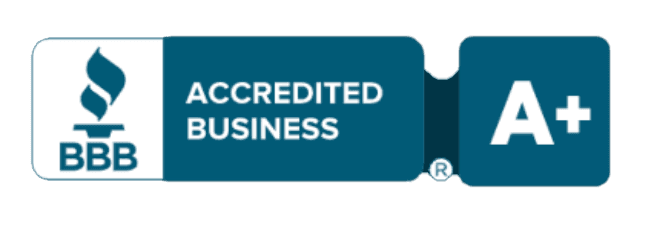Best Real Estate Accounting Tips for Agents and Brokers

Editor’s Note: This post was originally published in November 2019 and has been revamped and updated for accuracy and comprehensiveness. As the owner of a new real estate business, you’re probably aware of the unique characteristics of your industry. You take a personal interest in the real estate market, and you are excited to do great work for your clients, whether buying or selling pieces of property. But here’s the thing—running a real estate business is about more than making great deals. Accounting plays a major role in staying organized, managing taxes, and making smart decisions in any business. Why accounting is important for real estate businesses Setting up your real estate accounting system the right way will enable you to minimize the labor and stress involved in large-value transactions, extreme income fluctuations, employee pay formulas, and government regulations. These tips are for you if your business is: Real estate broker or agent Property management Building construction Residential sales Real estate investment management Another reason to keep accurate financial records is that you will probably have to show them to interested parties at some point. These entities include: Lenders Shareholders Creditors Government bodies (e.g., the IRS) There are many motivations to keep accurate books. And, contrary to popular belief, doing so does not have to be a major headache or hassle. With a service like xendoo, you can outsource your bookkeeping and tax work to focus on what you do best. For more information, check out this post on how to choose the right software to simplify your real estate accounting. Learn the Regulations Did you know that it is not just real estate transactions that local and state commissions oversee? These bodies also oversee the financial management of a real estate business, so playing by the rules is essential. Therefore, it’s a good idea to familiarize yourself with their requirements before making any decisions about your bookkeeping system. If the language is unclear, consult a professional accountant who specializes in real estate. It’s far better to spend extra time setting up your accounting procedures properly at the start than trying to untangle a mess when you run into trouble later on. Choose Who or What Will Do Your Real Estate Accounting For real estate professionals, the most viable options are: Hire an accountant as a full-time employee Outsource accounting services Accounting software used by management or other designated employees Hiring an accountant to work in-house is undoubtedly a powerful approach, but it will be costly and likely beyond the scope of many real estate businesses. On the other end of the spectrum, acquiring accounting software to manage the books yourself or amongst your team might be difficult if no one has proper accounting training or the time to dedicate to ensure your books are up to date. Even minor accounting mistakes can add up to bigger ones down the road. It’s the middle ground – outsourcing accounting tasks to a third party like xendoo – that will make the most sense for many real estate agents and brokers. This option keeps the costs down while still freeing up your time and utilizing experts to make sure the work is done properly. Select Your Accounting Method You have two choices: cash basis or accrual. Once you make a choice, you must stick with it, unless you submit a change request to the IRS. (Your first tax return shows the IRS which one you chose in the beginning — you don’t have to submit any forms for that.) Cash basis accounting is often preferred by small businesses because it’s easier to maintain, and it tells you how much money you actually have in the bank on any given day. Accrual accounting is usually the choice of larger companies because it portrays a more accurate portrait of your real estate business’s financial performance. Accrual accounting also allows you to better your long-term plan, which is helpful if you are thinking about expanding your business. Create a Chart of Accounts This complete index of your company’s transactions is essential for knowing how you stand. It will save you many hours of work when you need to measure performance, generate a report, locate past transactions, or prepare tax returns. The chart of accounts is organized into categories for easy sorting and retrieval. These categories can be anything you need. Under Assets, they might include Cash, Accounts Receivable, and Vehicles. Under Liabilities, you might have sub-accounts such as Accounts Payable, Loans, and Payroll. Keep Business and Personal Transactions Separate Don’t fall into the bad habit of pulling out your business credit card or checkbook to pay personal expenses — or vice versa. Without fail, it will cause more problems than it solves, including inaccurate books, tax mistakes, and cash flow issues. Real estate accounting shouldn’t be complicated, and this is one of the golden rules that can keep things simple—don’t make personal purchases with business accounts. Opening a separate bank account and a credit card strictly for your business will also make you look more professional to your customers, creditors, and investors. Fool-Proof Accounts Receivable Collecting payments that are owed is one of the biggest headaches for small businesses. Prevent delayed and missed payments with an automated invoicing system that: Sends invoices promptly Includes all the necessary information Offers several convenient ways to pay Tracks and contacts delinquent payers With an automated system in place, you’ll save time and avoid missing out on revenue that slipped through the cracks when you were too busy to track it down. Reconcile Your Bank Account Every Month Reconciling your bank account means checking that the transactions listed on the bank statement match what you have in your books. This process will identify any discrepancies so you can figure out why they happened and make a plan for avoiding those issues in the future. Usually, it’s something simple like a financial transaction that’s recorded in your books, but the bank hasn’t processed it yet. However, it could be
When SMB Owners Use QuickBooks: 6 DIY Mistakes to Avoid

QuickBooks accounting software can be a great tool for small businesses — but only if you’re using the tool right. We often see mistakes or omissions in books that were DIYed by our clients. Unfortunately, even little mistakes can snowball into big, expensive consequences. For example, if your tax return contains errors or discrepancies, you could get hit with penalties from the IRS. 1. Not switching to cash basis accounting. QuickBooks defaults to the other most common method of accounting, called accrual accounting. With accrual, you enter money owed to you at the time of the sale; with cash basis, you enter it when you actually get paid (a time difference that could be weeks or months). For small businesses, it’s more useful to see how much cash you really have at the moment, rather than a theoretical number. 2. Inventing your own chart of accounts. QuickBooks enables you to set up a system for organizing transactions into categories, such as income, assets, liabilities, receivables, and operating expenses. It should be as simple and straightforward as possible; a good guide is the categories on your tax return (IRS Form 1040 Schedule C). Complicating the chart of accounts with too many sub-categories will only cause confusion. Plus, it increases your chance of coding items incorrectly and messing up your tax return. 3. Forgetting to record transactions. When you’re focused on running your business, it’s all too easy to put off data entry to some more convenient time — a time that may not come for a while. By then, you may have completely forgotten about it, or can’t find the receipt. As the saying goes, “Do a little, do it often.” It’s much easier to find 15 minutes a day or week to update the books, rather than hours to tackle a huge pile at the end of the month, quarter or year. Plus, you’ll always have an accurate view of your current cash flow, and be able to nip potential problems in the bud. 4. Entering the same transaction twice. For example, you might buy printer ink with your credit card and enter it as a business expense on the day of the purchase. When the credit card bill comes in, you might enter that expense again. 5. Not performing adjustments correctly. Some DIY bookkeepers skip the steps necessary to separately identify gross income, net income, and expenses. Say, for example, you’re an e-commerce business that uses a payment processing service such as Shopify. Your customer buys a $100 item, and Shopify takes a $10 fee. You can’t just enter your net revenue of $90. You must enter the gross revenue of $100 and an expense of $10 separately. Mistakes also often occur in adjusting for interest paid on a business loan. You should be using an amortization schedule to get the numbers right. 6. Not saving old records. If you leave QuickBooks for any reason, you’ll get read-only access to the most recent year of your bookkeeping. Anything older than that will be lost forever unless you export and save them. Even if your business is closed, you should hang onto them. Those records could help you get a loan or investors to start a new business, or be an essential requirement in an IRS audit. The last thing you shouldn’t do is worry over whether you’re doing QuickBooks right. xendoo accounting experts can help you clean up any problems and provide helpful tips for getting the most out of your accounting software. [av_sidebar widget_area=’Blog Post Disclaimer’ av_uid=’av-om2w’]
A Prettier Profit and Loss Statement: Up- and Cross-Selling Techniques for Salon Owners

Editor’s Note: This post was originally published in October 2017 and has been updated for accuracy and comprehensiveness. If you’re like most salon owners, the chances are good that you decided to start a hair salon because you love meeting new people and helping them feel more beautiful than when they walked in your front door. It’s only natural because everyone loves a rewarding job. Focusing on sales techniques, like up-and cross-selling for salons probably wasn’t high on your list of “pros” when you got into the salon industry. But for better or for worse, persuading clients to purchase products or services that they didn’t initially come in for is an essential part of your marketing strategy and can boost your profit and loss statement. That doesn’t mean selling them products they don’t need. Cross-selling and up-selling are selling them products they need but didn’t know about. It’s part of your job to educate the client, so let’s take a look at how up-selling and cross-selling for the salon business can be less faux-pas and more moo-lah, and why salon owners already have a head start. The Difference Between Up-Selling and Cross-Selling Up-selling is the practice of encouraging customers to purchase a more expensive item than they had initially intended. We do this by creating value for the customer in the more expensive product. Often, the customer just needs someone to point out the extra value. Depending on the type of salon, if a client is scheduled for a regular manicure/pedicure procedure at retail price, check-in staff can create value for the customer by offering a deluxe spa treatment for just a slightly higher price. You might even be able to have your salon software automatically remind staff to offer the upgrade at check-in. If the customer is already spending $50, it’s easy to justify upgrading for just $10 more because it represents a good value. Cross-selling for salons is the practice of encouraging customers to purchase other products or services that complement the original sale in some way. Sometimes customers don’t know what they need, and it’s your job as the expert to educate them about it. Effective cross-selling for salons might look like this: If a dark-haired client has decided to go blonde, you as the stylist know that those harsh chemicals can damage and dry out the hair, but the customer may not know that. You can explain this and encourage your client to buy a conditioning treatment to help offset that damage. Why Cross-Selling and Up-Selling Are Important The bottom line is that up-selling and cross-selling for salons are critical to your bottom line in several ways. If you’re not doing it, you’re leaving money on the table. If you have a low-margin product that’s selling great and a high-margin product that’s not selling so well, an excellent cross-selling technique might be to bundle the two together and get that extra profit. But even more importantly, it allows you to create additional value for your customers, which is crucial to maintaining customer loyalty and trust. After all, value is why your customers come to you to begin with and what makes a successful salon. When deciding whether a sales opportunity is right, ask yourself, “Will this improve my customer’s life? Will it help them feel more beautiful?” If the answer is yes, you know what to do. So What’s This Head Start? Salon business owners have a special trust relationship with their clients, which gives them an edge in ideas to increase profits. Stylists don’t just know their customers’ names; they know everything going on in their lives —their children, jobs, and health. They open up their entire lives to you, which puts you in a unique position of influence with your customer. To put it more bluntly, if they trust you enough to let you bring sharp blades around their heads and irreversibly alter their appearance (for a few months, anyway), they will trust your recommendation on special products and services. Remind your team that they have this superpower because it’s critical to your business, but don’t abuse it by selling customers things they don’t need. That will almost always backfire and damage your relationship. OK, I’m Convinced. Now What? Now that you know the importance of upselling and cross-selling for salons, here are a few things you can do right away to get the ball rolling. Get effective inventory management and accounting system for your salon if you don’t already have one to know exactly which products are moving and which aren’t, and what the margin on each one is. Good accounting for hair salons is a must, and if you don’t have that information at your fingertips, you’re flying blind. Create an attractive display with high visibility where customers can browse it easily. Never put it behind the counter because curious customers will feel like it’s inaccessible. Keep it organized, and well-stocked with the products that you believe are strong candidates for this strategy. Remember: eye-level is buy-level. Research has shown that products placed at eye level get 35% more attention than products placed at lower levels. Ensure your staff is using the products you sell and posting them on social media. The best advertisement for a product is being able to see the results in real-time on a person’s natural hair or skin. Remember the trust relationship; if the stylist uses the product, it gives the customer confidence that it must be good. It’s almost like giving away a little trade secret. Purchasing salon-quality products that stylists actually use makes your customers feel like they have a leg up in their beauty routine. Give your staff the tools to make cross-selling for salons easier. At a minimum, everyone in your salon should be familiar with every item you sell and be able to describe it to customers. But knowledge of the products is only a start. Your team needs to be trained in effective cross-selling and up-selling techniques and incentivized to





